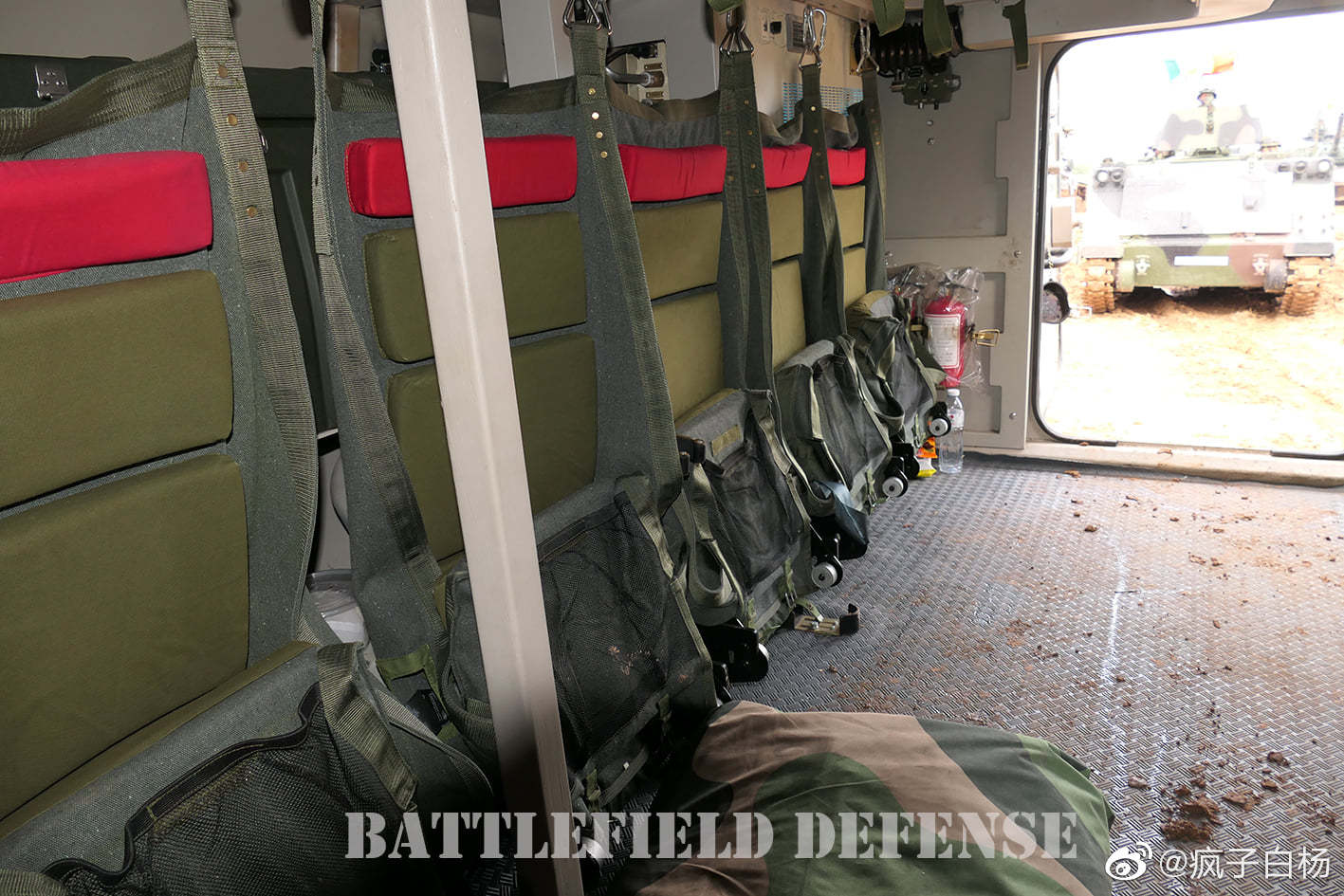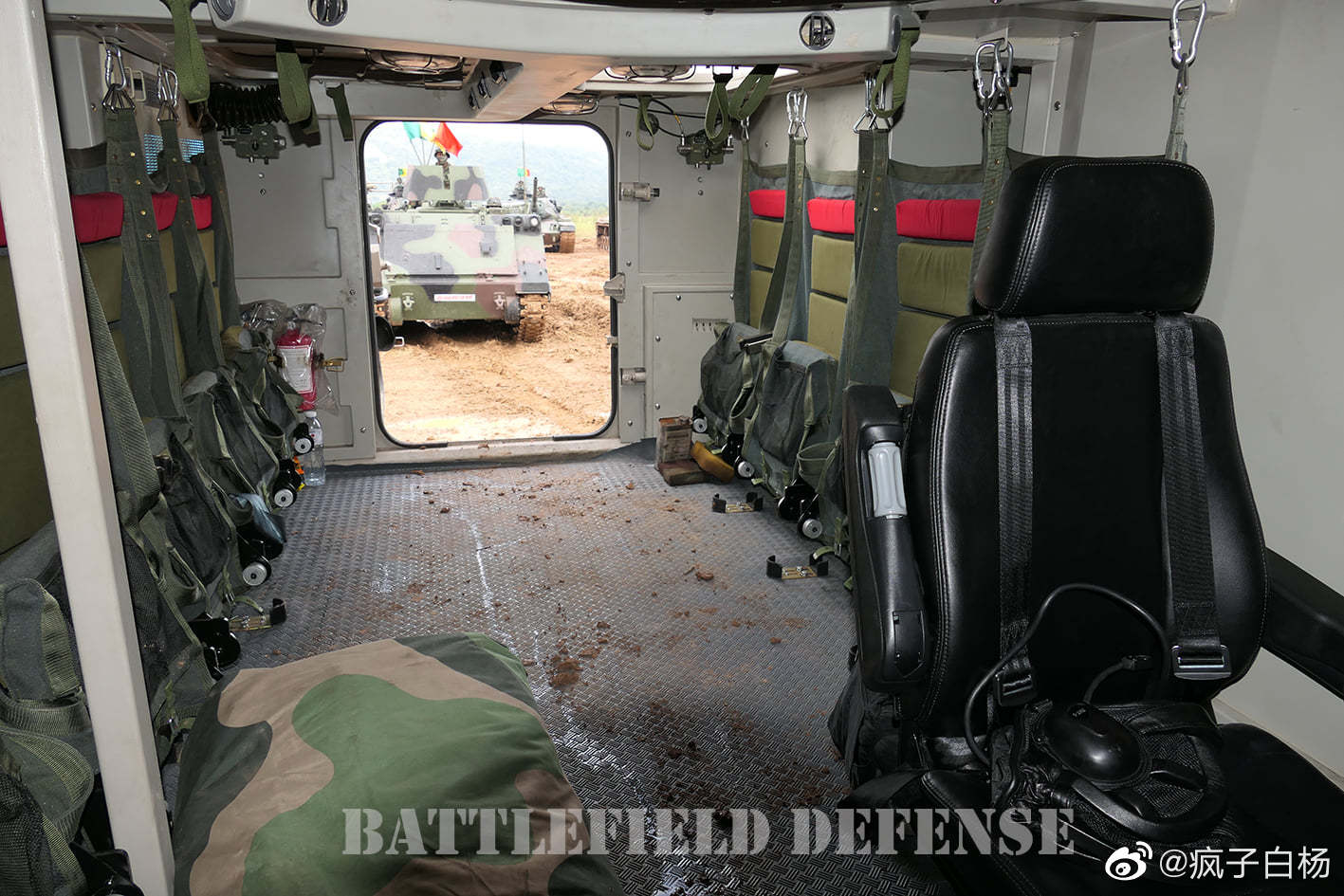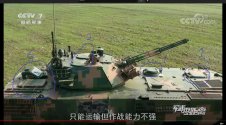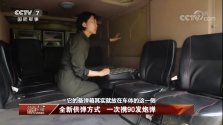Excellent and very informative post. One of the best I've seen on SDF in fact. I have revised my view on the usefulness of ZBD-03, it seems that properly employed it can be very useful in the absence of sufficient helicopters.My three cents on the ZBD-03 and the misunderstanding around BMDs.
"The point" is that they are air-droppable air-mobile vehicles with autocannons and not armored personnel carriers. Such vehicle superficially looks like a mechanized infantry vehicle but it isn't one because its tactical role is different.
Airborne vehicles have to prioritize strategic mobility over tactical mobility, and once deployed they have to prioritize tactical mobility over protection because airborne is a light infantry formation. Airborne fights as light infantry and not mechanized infantry and therefore airborne vehicles do not provide protection but mobility. Being able to move troops over rough terrain or water is more important because it allows deployment in infrastructure-poor areas or difficult terrain to provide attacking troops with surprise factor or defensive advantages.
The purpose of airborne vehicles is to provide tactical mobility on the ground and strategic mobility in the air. Range of transport aircraft is limited by the payload so the lower the mass of the vehicle the further it can be carried. Tracks provide better tactical mobility, propulsion in water which lowers mass for amphibious vehicles and also better stability for gun fire.
On that - most people forget that gun stabilization is a problem of countering momentum which is difficult in vehicles with low inertia due to low mass. Gun stabilization is not just the gun stabilizers in the turret but also suspension and gaps between mechanical elements (bearings in the turret, the tolerances inside the turret ring) that contribute to displacement. Hydropneumatic suspension of tracked vehicles allows for significantly better stability, especially on the move, over the best stabilizers in the turret of a wheeled vehicle, because wheeled vehicles have pneumatic tires and steering wheels both of which are not controlled for degrees of freedom of movement (just one in tracked suspension). Greater stability means greater accuracy of fire and that means out-ranging the enemy with precise fire. Milimeters of vehicle displacement means meters at 1km range. No armor that is available for a viable airborne vehicle will compensate for a well-stabilized 30mm gun. Wheeled vehicles also have fewer elements of suspension counter-acting which means lower resistance to forces so a tracked vehicle of the same mass will handle recoil of a more powerful gun or handle recoil of an identical gun better leading to greater stability.
Furthermore ZBD-03 was designed as improvement of BMD-3 but people typically misunderstand the main shortcoming of BMD-3. It wasn't it's poor armor but layout and width.
The layout of BMD series puts the dismounts around the turret at the front of the vehicle and provides a single hatch for egress over the engine at the back. Any hit that penetrates the armor will affect the entire crew compartment and the dismounting troops have to expose themselves doing so. It was a fatal design flaw that Russians refused to correct because of their institutional limitations. ZBD-03 corrects both mistakes by using BMP-1 layout but at the expense of thinner armor since the only way to achieve greater internal volume was to reduce the armor to minimum. Greater internal volume had the additional benefit of further improving ZBD-03's amphibious capability.
The width of BMD-3 was 3,1m while ZBD-03 is only 2,6 which allows two ZBD-03 to be transported inside a medium-size military transport plane like Y-8 (cargo bay size: 13,5 x 3,0 x 2,4 m) instead of zero BMD-3 or one ZBD-03 at greater range. Considering the number of Y-8/Y-9 and Il-76/Y-20s in service as well as the prioritization of payloads it is logical that PLA has no use for an airborne vehicle that is not transportable by Y-8s. ZBD-03 misses the size requirement for CH-53K only by 20cm of height.
The armor is incidental and protects against the most common small arms caliber like 5,56mm or 5,45mm because it makes no sense to provide protection against 7,62mm or more because while within effective range of such ammunition in hostile territory infantry should not travel inside the vehicle. If you see examples like this one
it is not an example of BMD's flaw but the commander's incompetence and the general poor training of Russian troops. I don't think you would see British light infantry travel in their Jackals (open-top light mobility vehicles) through a hostile area. This is overt violation of fundamentals from tactical manuals. The failure of VDV in the current war is a tactical one, not a technical one. Most fatal mistake is to use airborne units as mechanized units and then drive them under-strength into defended areas.
This is the scenario for which Israel has 60t Namer APC and never uses them without sizeable MBT escort while reinforcements use 30+ t Eitan 8x8. Regular IFVs and APCs have no place in such scenarios as the war in Lebanon in 2006 demonstrated. Why Russians decided to ignore it? The answer to this question exists but it is not a rational one.
BMD is also not a Russian quirk copied by China - this is what will replace 2,7t Wiesel 1 of the Heer (German Army):
The reason why US military doesn't have such vehicles is because they use helicopters in most tactical roles fulfilled by such vehicles and supplement it with extensive aerial support from fixed-wing aviation. It's a consequence of having a well developed aerospace industry and being an energy producer. Anyone else who has to economize in one or both of those areas of the chooses the "Russian way" which means greater use of airmobile vehicles to reduce dependency on aerial transport.
All in all ZBD-03 seems like a good airborne vehicle, especially if China managed to improve on parts reliability compared to BMDs and continues to upgrade the sensors and electronics. It seems like all the benefits of a BMD with none of its flaws. Whether ZBD-03 is the optimal direction in the future is an open question that hinges upon the development of China's aerial logistics.
The airborne vehicle is the mediator between the light infantry and its aerial logistics. Less aerial logistical capability means more airborne vehicle capability and that's where BMD and consequently ZBD-03 comes from.
Mobility and fire is best armor.
MBT's have heavy armor because they punch through enemy defenses and take direct hits. The main defensive tactic for tanks is mobility and fire. Anyone who says otherwise has never read a single manual on tank tactics. An immobile tank is a dead tank because no tank will survive an artillery barrage and that's what the fighting in Ukraine since 2014 demonstrated. There was nothing wrong with tracks. There was plenty wrong with soldiers not using them to move.
When under fire the first maneuver is to disperse so when an airborne unit riding in a ZBD-03 gets under fire and can't maneuver out of it fast enough the troops will dismount and scatter while the vehicle will keep moving around in the area. Losing the vehicle doesn't disable airborne infantry as much as a loss of an IFV to a mechanized infantry unit because the infantry is the primary fighting force and the vehicle is just the mobility/firepower/sensor multiplier. In tactical terms it's even incorrect to seek cover (but not concealment) behind the vehicle because it only draws from heavier weapons.
Tell it to the soldiers in an airborne company. I dare you.
The only thing more vulnerable than a light infantry unit traveling on foot is a light infantry unit traveling on foot weighed down by excess amount of supplies.
The only reason why airborne doesn't have vehicles is because of how introducing vehicles complicates logistics. Every airborne unit wants permanent aerial support but their governments can't afford it. Every airborne units wants specialized vehicles as a substitute but their governments can't afford them either. This is why every airborne unit except for a select few is light infantry traveling on foot with as much supplies that it can carry on its back and very unhappy about it.
The 100mm serves as additional support for the 30mm. It provides greater stability just by increased mass and rigidity. There are not many HE or HE-FRAG rounds being carried so the risk shouldn't be much greater than it already is due to BMD's flawed layout.
You are using an out of date browser. It may not display this or other websites correctly.
You should upgrade or use an alternative browser.
You should upgrade or use an alternative browser.
Chinese infantry fighting vehicles
- Thread starter Broccoli
- Start date
No the US definitively had plans to make lightly armored vehicles for airborne transport. The Future Combat Systems program.The reason why US military doesn't have such vehicles is because they use helicopters in most tactical roles fulfilled by such vehicles and supplement it with extensive aerial support from fixed-wing aviation. It's a consequence of having a well developed aerospace industry and being an energy producer. Anyone else who has to economize in one or both of those areas of the chooses the "Russian way" which means greater use of airmobile vehicles to reduce dependency on aerial transport.
It was cancelled after they had to funnel money into buying Stryker and MRAP vehicles for the occupation of Iraq. Instead of being involved in rapid air mobile conflicts the US found itself in a way different situation where they had to hold ground or police Iraq. A place with superb road infrastructure.
TerraN_EmpirE
Tyrant King
By your later statements this is a conflicting. You contradict yourself. As the vehicle is protected by degrees of armor and Carries Infantry dismounts. Don’t feel bad about this though as it’s not you it’s Russia. The BMP3 has this issue."The point" is that they are air-droppable air-mobile vehicles with autocannons and not armored personnel carriers
Again BMP3 comes in with this same layout. Farther the BMP3 to properly support the infantry has to keep 2 of them in the vehicle to operate PKMs.The layout of BMD series puts the dismounts around the turret at the front of the vehicle and provides a single hatch for egress over the engine at the back. Any hit that penetrates the armor will affect the entire crew compartment and the dismounting troops have to expose themselves doing so. It was a fatal design flaw that Russians refused to correct because of their institutional limitations.
Then by your admission it is armored. The problem here is that 7.62x51NATO and 7.62x54R are both infantry calibers. So VS a Nato squad they are hardened to the Assault rifles maybe the Squad automatic weapons but the DMR gunner pokes it full or holes. At platoon level the Weapons section turns it into Swiss cheese with M60s or Fn Mags. Vs Russian units again the Dragonov goes to town along with the PK.The armor is incidental and protects against the most common small arms caliber like 5,56mm or 5,45mm because it makes no sense to provide protection against 7,62mm or more because while within effective range of such ammunition in hostile territory infantry should not travel inside the vehicle. If you see examples like this one
The engine isn’t armor it’s mobility and survival.
It’s not Just VDV it’s the whole Russian front. The Area they were employed has been more or less translated to “the Bog” in WW2 it’s where Germany stalled in the mud followed by the winter. The Russians launched this affair when it’s all muck. This has forced them on to roads which are shooting galleries.it is not an example of BMD's flaw but the commander's incompetence and the general poor training of Russian troops. I don't think you would see British light infantry travel in their Jackals (open-top light mobility vehicles) through a hostile area. This is overt violation of fundamentals from tactical manuals. The failure of VDV in the current war is a tactical one, not a technical one. Most fatal mistake is to use airborne units as mechanized units and then drive them under-strength into defended areas.
These issues aren’t just the VDV but tanks and infantry units to. Had the Ukrainians the air force the number of new highway of death would be in the dozens.
It's probably not used as an IFV to fight closely. It's probably transporting troops like a M113 and have a autocannon for long range support.I never understood whats the point of those thinly armored airborne vehicles because their armor can't protect you from anything else than assault rifle rounds... armored 4x4 truck gives same amount of protection but cheaper. Okay, people say they got tracks what makes them mobile, but whats good about that mobility if enemy awaits you with heavy machinegun, and then destroys "more mobile" vehicle because it got a glass jaw? In that case it's tracks don't matter as we have witnessed in Ukraine since 2014.
Carrying supplies for airborne units instead of those vehicles would be more useful.
TerraN_EmpirE
Tyrant King
I missed this one, not sure how.No the US definitively had plans to make lightly armored vehicles for airborne transport. The Future Combat Systems program.
It was cancelled after they had to funnel money into buying Stryker and MRAP vehicles for the occupation of Iraq. Instead of being involved in rapid air mobile conflicts the US found itself in a way different situation where they had to hold ground or police Iraq. A place with superb road infrastructure.
Anyway. No. FCS was not Made for the Airborne. It was supposed to replace Strykers and even Heavy armor.
When the FCS program was written the Russians were considered as relevant a modern threat as the Vikings. The Chinese were being eyed but mostly for exporting stuff to trouble spots. It was “The end of History” General Eric Shinzeki Chief of the Army wasn’t restricting his vision to the Airborne he was looking at an Army wide remodel. The new model was to deal with “Asymmetric warfare” ironically. This was in the late 1990s.
US army was operating more as peacekeeper forces, but where the Blue Helmets are basically scarecrows and Hall Monitors; famously with incidents of getting literal robbed and stripped of vehicles, weapons and even Uniforms. US forces on such deployments were more likely to shoot back. The idea was when the Blue domes didn’t work the US Army might be called in to “Augment”.
Shinzeki apparently was a sci-fi fan as he envisioned a US Army hybridized of the Colonial Marines in Aliens and Mobile Infantry of Starship troopers. Think Halo UNSC and your not far from the mark.
FCS was supposed to be a rapid deployment force with only a small reserve of legacy armored vehicles. It was supposed to be deployable by rolling out of C130s it would have equivalents to Tanks, IFVs, Scout vehicles, self propelled Howitzers, Self propelled Mortars, recovery vehicles, Command vehicles, Ambulances all weighing between 20-25 tons. With all the digital goodies. Farther assisting would be Large UGVs as cargo resupply platforms, Additional firepower and mine clearance. 4 classes of drone, the OICW XM29 and XM8, the Objective crew served weapon a machine gun grenade launcher in 25mm. Smart mines, proximity sensors, the Nonline of sight missile system. Land warrior even the ACU and Beret came from it. With long term schemes right out of Halo. The Soldier 2025 with a nanotechnology infused kit might as well have been Mjolnir.
The Army did want a new tactical lifter with it but none of the vehicles were Paradrop. They were to be rolled out the back of a transport. Airborne units of the US Army would still have been infantry based using primarily Humvees, possibly adopting FCS light tanks to replace the then in bad shape Sheridan.
In 1999 Shinzeki as an interim measure pushed the rapid adoption and implementation of the Stryker to gap fill well the FCS stuff was in R&D. Then came 9/11. The. The Iraq war as we know FCS was canceled. Comanche was canceled to. The FCS ground vehicles Despite being intended for “Asymmetrical warfare” it wasn’t built to take roadside bombs and was beyond to ambitious. To light to fight to heavy to travel. Much like the VDV vehicles the new survival requirements and transportation were mutually exclusive. Besides the army needed MRAPS.
Portions of the program that were ready were salvaged but the bulk of it has been killed off either all at once or as time progressed. A few have cycled back in modified forms often more mature thanks to 20 years of work.
Last edited:
China had and still probably has rampant corruption in every corner on every level. Surely that's improved a lot but I don't think it's something that China can get rid of completely. The US has a lot more corruption than Finland. The French have a lot more corruption than the Irish. What I'm trying to say is that it's also a matter of size, wealth, and power. The more your society has in power and influence beyond your borders, the more those forces thrive. The Japanese some people may assume or like to think of as incorruptible but the truths are so far from those assumptions.
If there is more happening in your society, there is just more space for corruption to exist in and thrive in.
So no matter how Xi and the current CPC tries to curtail corruption at every level, in every corner, unless there is some sort of cultural and social paradigm shift, there is going to be almost just as much corruption around as there was before simply because China has been doing more. There are probably more shady dealings between the handful of Japanese rail corporations, the government, the Yakuza, and who knows who else, than there is with the CRC.
Corruption is universal. If there is nothing happening and no money being exchanged, there is simply less room for it.
China like many "big and powerful" places are also greater victims of corruption due to the individual belief that someone else is there to do the right thing and take care of the problem even if they choose to ignore their duties. It's one of those "we're too big and powerful to be defeated anyway" attitudes. Can make people complacent and become more partial to ignoring duties.
Whether it's our indoctrination or whatever, I do find it hard to believe that the Chinese military is less corrupt than the US. Maybe it's just what we're conditioned to believe but as corrupt as the US obviously is and can be, it just seems like China would be at least a little worse with all this. Being Chinese you can just imagine that. Of course I should note that modern China is so very, very different in just cultural attitudes to even the 1990s. That era would itself have been a stark contrast to the 1970s and that in contrast to the cultural revolution days. China does progress and transform itself quickly. Even cultural transformations between generations can be dramatic ... well in certain domains. Many other things do stay fairly constant.
If there is more happening in your society, there is just more space for corruption to exist in and thrive in.
So no matter how Xi and the current CPC tries to curtail corruption at every level, in every corner, unless there is some sort of cultural and social paradigm shift, there is going to be almost just as much corruption around as there was before simply because China has been doing more. There are probably more shady dealings between the handful of Japanese rail corporations, the government, the Yakuza, and who knows who else, than there is with the CRC.
Corruption is universal. If there is nothing happening and no money being exchanged, there is simply less room for it.
China like many "big and powerful" places are also greater victims of corruption due to the individual belief that someone else is there to do the right thing and take care of the problem even if they choose to ignore their duties. It's one of those "we're too big and powerful to be defeated anyway" attitudes. Can make people complacent and become more partial to ignoring duties.
Whether it's our indoctrination or whatever, I do find it hard to believe that the Chinese military is less corrupt than the US. Maybe it's just what we're conditioned to believe but as corrupt as the US obviously is and can be, it just seems like China would be at least a little worse with all this. Being Chinese you can just imagine that. Of course I should note that modern China is so very, very different in just cultural attitudes to even the 1990s. That era would itself have been a stark contrast to the 1970s and that in contrast to the cultural revolution days. China does progress and transform itself quickly. Even cultural transformations between generations can be dramatic ... well in certain domains. Many other things do stay fairly constant.
8x8 IFV family:
by78
General
Looks like the standard 8x8 IFV has capacity for 10 soldier in total:
View attachment 86791
1 driver, 1 vehicle commander, 1 gunner, 1 front observer, 6 soldiers.
You can check the previously shared video from 12:50 to 14:10 to see how many soldiers the back cabin can carry.
In a video about the new telescoped cannon there are 8 seats in the back with an unmanned turret.
View attachment 87133
We've known about this for a while now. Manned turrets eat into internal space, which reduces seating capacity for embarked infantry to six. IIRC, the exception is the APC variant, because the basket for machine gunner is very compact.
As an example, the Thai VN1s feature remote weapon stations that don't penetrate into the hull, thereby allowing eight soldiers to embark.





Last edited:


